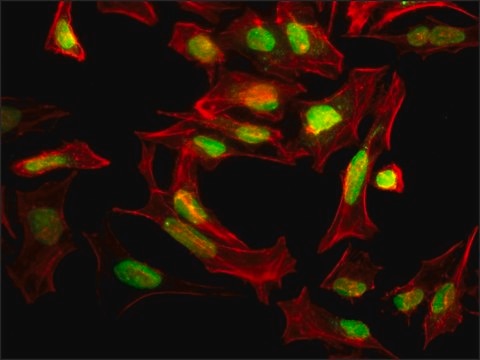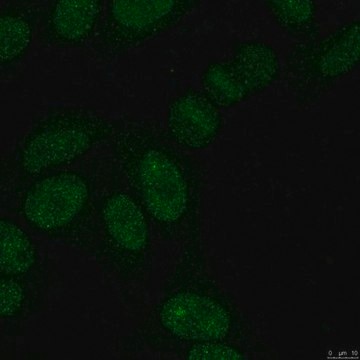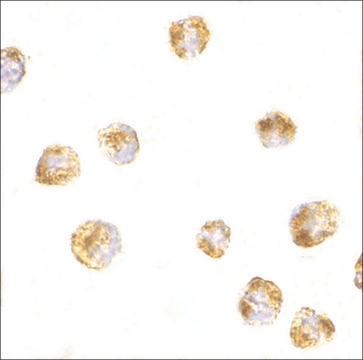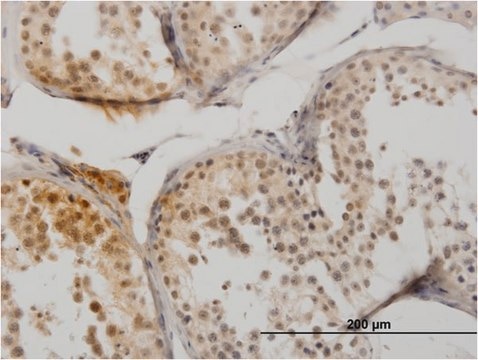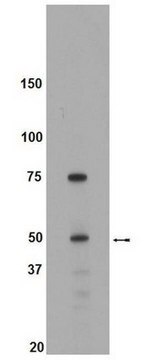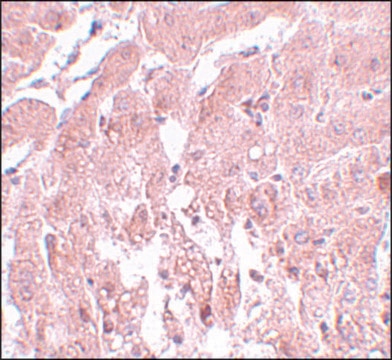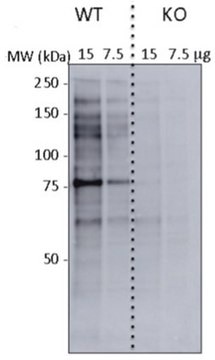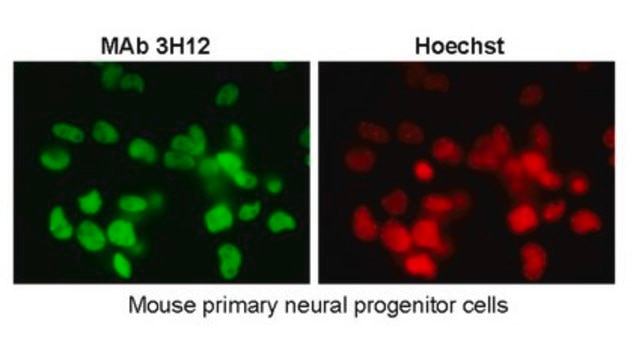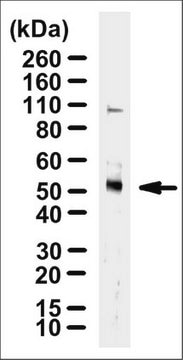MABS2071
Anti-SUMO-1 Antibody, clone 21C7
clone 21C7, from mouse
Synonym(s):
Small ubiquitin-related modifier 1, GAP-modifying protein 1, GMP1, SMT3 homolog 3, Sentrin, Ubiquitin-homology domain protein PIC1, Ubiquitin-like protein SMT3C, Smt3C, Ubiquitin-like protein UBL1
About This Item
Recommended Products
biological source
mouse
antibody form
purified immunoglobulin
antibody product type
primary antibodies
clone
21C7, monoclonal
species reactivity
chicken, human, mouse, zebrafish, rat, Xenopus, fish
packaging
antibody small pack of 25 μg
technique(s)
immunocytochemistry: suitable
immunofluorescence: suitable
immunohistochemistry: suitable
immunoprecipitation (IP): suitable
western blot: suitable
isotype
IgG2b
NCBI accession no.
UniProt accession no.
target post-translational modification
unmodified
Gene Information
human ... SUMO1(7341)
Related Categories
General description
Specificity
Immunogen
Application
Immunocytochemistry Analysis: A representative lot detected SUMO-1 in Immunocytochemistry applications (Matunis, M.J., et. al. (1996). J Cell Biol. 135(6 Pt 1):1457-70; Zhang, X.D., et. al. (2008). Mol Cell. 29(6):729-41).
Immunoprecipitation Analysis: A representative lot immunopprecipitated SUMO-1 in Immunoprecipitation applications (Costa, M.W., et. al. (2011). PLoA One. 6(9):e24812; Becker, J., et. al. (2013). Nat Struct Mol Biol. 20(4):525-31; Girach, F., et. al. (2013). Cell Rep. 5(5):1294-301; Chanda, A., et. al. (2017). PLoS One. 12(5):e0177639).
Western Blotting Analysis: A representative lot detected SUMO-1 in Western Blotting applications (Zhang, X.D., et. al. (2008). Mol Cell. 29(6):729-41; Matunis, M.J., et. al. (1996). J Cell Biol. 135(6 Pt 1):1457-70; Rogers, R.S., et. al. (2004). Chromosoma. 113(5):233-43; Costa, M.W., et. al. (2011). PLoA One. 6(9):e24812; Becker, J., et. al. (2013). Nat Struct Mol Biol. 20(4):525-31).
Immunofluorescence Analysis: A representative lot detected SUMO-1 in Immunofluorescence applications (Girach, F., et. al. (2013). Cell Rep. 5(5):1294-301; Rogers, R.S., et. al. (2004). Chromosoma. 113(5):233-43; Matunis, M.J., et. al. (1996). J Cell Biol. 135(6 Pt 1):1457-70).
Signaling
Quality
Western Blotting Analysis: 4 µg/mL of this antibody detected SUMO-1 in HCT116 cell lysate.
Target description
Physical form
Storage and Stability
Other Notes
Disclaimer
Not finding the right product?
Try our Product Selector Tool.
Certificates of Analysis (COA)
Search for Certificates of Analysis (COA) by entering the products Lot/Batch Number. Lot and Batch Numbers can be found on a product’s label following the words ‘Lot’ or ‘Batch’.
Already Own This Product?
Find documentation for the products that you have recently purchased in the Document Library.
Our team of scientists has experience in all areas of research including Life Science, Material Science, Chemical Synthesis, Chromatography, Analytical and many others.
Contact Technical Service